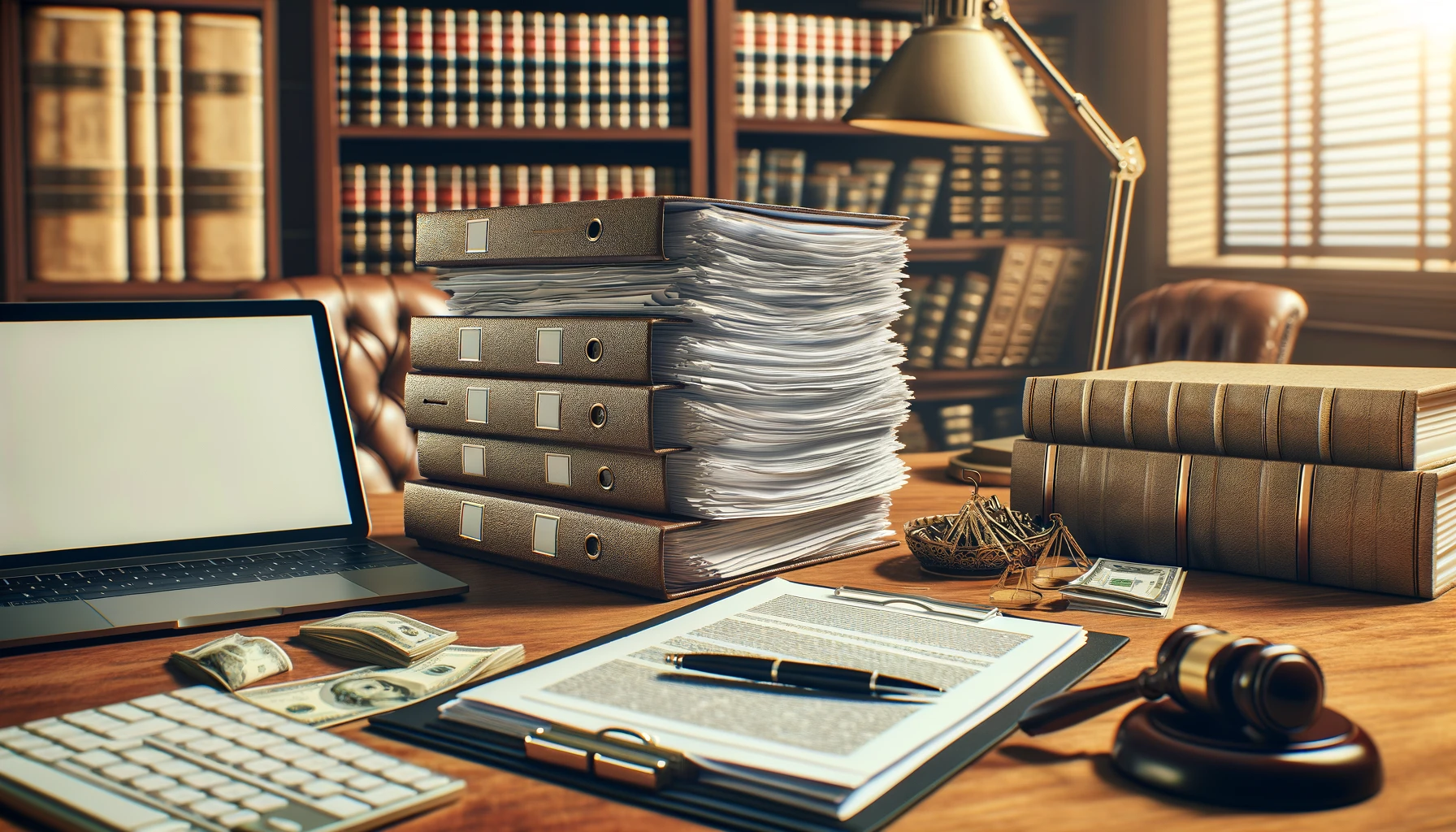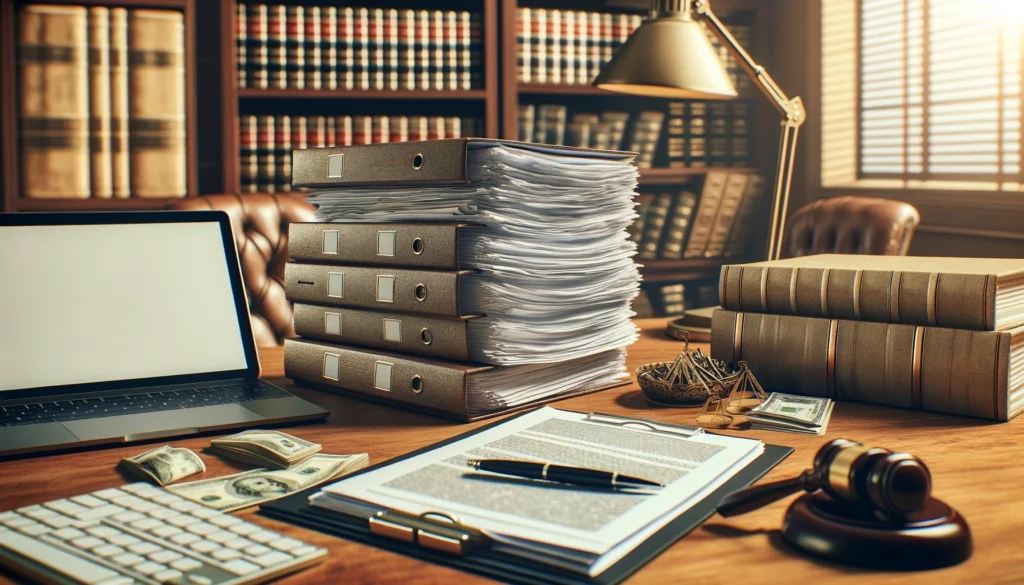
Introduction
Are you a paralegal feeling overwhelmed by the sheer volume of discovery documents in personal injury cases? In today’s fast-paced legal environment, staying organized and efficient is more important than ever. But what if there was a way to streamline this process, to make it not only more manageable but also more effective?
Enter ChatGPT, a powerful language model that can help paralegals optimize their workflow and improve document organization. This article will guide you through the process of leveraging ChatGPT to speed up your day-to-day work related to discovery documents in personal injury cases. We’ll explore creative prompts and techniques that can help you make the most of this innovative technology.
First, let’s take a moment to understand the role of discovery documents in personal injury cases.
Understanding Discovery Documents in Personal Injury Cases
Discovery documents play a crucial role in personal injury cases, serving as the foundation for building a robust case strategy. They encompass a wide range of information exchanged between parties during the pre-trial phase, including but not limited to:
- Medical Records: These provide details about the plaintiff’s injuries, treatment, and prognosis.
- Witness Statements: These offer firsthand accounts of the incident in question.
- Incident Reports: These documents provide official records of the incident from authorities or organizations involved.
- Correspondence: This includes any letters, emails, or other communication related to the case.
The organization and management of these documents can significantly impact the outcome of a case. However, the volume and complexity of discovery documents can be challenging to manage, leading to potential inefficiencies and oversights.
In the next section, we’ll explore how ChatGPT and other language models can assist in managing this complex task. The integration of such technology could revolutionize the way paralegals handle discovery documents, making the process more efficient and less prone to error.
Also read:
The Role of ChatGPT and Language Models in Legal Work
ChatGPT and other language models are part of a broader category of technology known as artificial intelligence (AI). These tools are designed to understand and generate human-like text, making them highly useful in fields that rely heavily on written communication, such as law.
In the legal sector, AI can perform tasks such as document review, legal research, and even drafting of simple documents. For paralegals, this means that tasks that once took hours can now be completed in minutes, freeing up more time for strategic and complex tasks.
When it comes to discovery documents in personal injury cases, ChatGPT can assist in several ways:
- Document Organization: ChatGPT can help categorize and summarize documents, making them easier to navigate and understand.
- Information Extraction: ChatGPT can identify and extract key information from documents, such as names, dates, and key facts.
- Document Review: ChatGPT can review documents for relevance, potentially reducing the time spent on manual review.
In the next section, we’ll delve deeper into how ChatGPT can be used to optimize discovery document organization in personal injury cases. Stay tuned to learn about some creative prompts and techniques that can help you leverage this technology effectively.
Also read:
Optimizing Document Organization with ChatGPT
ChatGPT can be a game-changer when it comes to organizing discovery documents in personal injury cases. Here’s how you can leverage this tool to streamline your document organization process:
- Summarization: Ask ChatGPT to provide a summary of lengthy documents. This can help you quickly understand the content without having to read every word. For example, you might ask, “Summarize this medical report in three bullet points.”
- Categorization: ChatGPT can help categorize documents based on their content. For instance, you could ask, “Is this document a medical record, witness statement, or incident report?”
- Information Extraction: ChatGPT can extract key information from documents. For example, you might ask, “What is the date of the incident mentioned in this document?” or “Who are the witnesses mentioned in this statement?”
- Search: Use ChatGPT to search within documents for specific information. For example, you could ask, “Find all mentions of ‘spinal injury’ in this document.”
By leveraging these capabilities, you can transform your document organization process, making it more efficient and less prone to human error.
In the next section, we’ll explore some creative prompts that you can use with ChatGPT to further enhance your work in personal injury cases. These prompts are designed to help you think outside the box and make the most of this powerful tool.
Also read:
Creative Prompts for ChatGPT
While basic prompts can be useful, taking a creative approach can help you unlock the full potential of ChatGPT. Here are some nuanced prompts that can help paralegals tackle complex tasks:
- Predicting Opposing Counsel’s Arguments: Ask ChatGPT to predict potential arguments from the opposing counsel based on the documents. For example, “Based on this medical report, what arguments might the defense use to downplay the plaintiff’s injuries?”
- Identifying Inconsistencies: ChatGPT can help identify inconsistencies between different documents. For instance, “Are there any discrepancies between this witness statement and the incident report?”
- Generating Questions for Depositions: Ask ChatGPT to generate questions for depositions based on the documents. For example, “What questions should I ask the witness based on their statement?”
- Drafting Correspondence: ChatGPT can assist in drafting correspondence related to the case. For instance, “Draft an email to the opposing counsel requesting additional medical records related to the plaintiff’s spinal injury.”
- Creating Case Timelines: Ask ChatGPT to create a timeline of events based on the documents. For example, “Create a timeline of the plaintiff’s medical treatment based on these records.”
- Identifying Key Evidence: ChatGPT can help identify key pieces of evidence in the documents. For instance, “What pieces of evidence in this document support the plaintiff’s claim of negligence?”
By using these creative prompts, paralegals can leverage ChatGPT to not only speed up their work but also to gain deeper insights and improve their case strategy.
Also read:
Best Practices for Using ChatGPT in Legal Work
To make the most of ChatGPT in your legal work, consider the following best practices:
- Training: Spend time learning how to use ChatGPT effectively. The more familiar you are with its capabilities, the more you’ll be able to leverage it.
- Contextualization: Provide enough context for ChatGPT to give accurate responses. For example, instead of asking “What is the date?”, ask “What is the date of the incident mentioned in this document?”
- Review: Always review the outputs of ChatGPT. While it’s a powerful tool, it’s not infallible and its responses should be verified.
Also read:
Ethics and Data Confidentiality
When using ChatGPT or any other AI tool in legal work, it’s crucial to consider ethical implications and data confidentiality.
- Confidentiality: Ensure that any sensitive information is handled securely. This might involve anonymizing data before inputting it into ChatGPT or using a secure, private instance of the tool.
- Transparency: Be transparent about the use of AI in your work. This can help maintain trust with clients and other stakeholders.
- Compliance: Stay updated with the latest guidelines and regulations regarding the use of AI in legal work to ensure compliance.
Also read:
Conclusion
In conclusion, ChatGPT and other language models offer a powerful tool for paralegals to optimize their workflow, particularly in the organization of discovery documents for personal injury cases. By leveraging creative prompts and techniques, paralegals can unlock new efficiencies and gain deeper insights into their cases.
However, the use of such tools also comes with responsibilities. It’s crucial to consider ethical implications, ensure data confidentiality, and maintain transparency in the use of AI.
As technology continues to evolve, tools like ChatGPT are likely to become increasingly integral to the legal field. By embracing these tools and learning to use them effectively, paralegals can stay ahead of the curve and deliver better outcomes for their clients.


